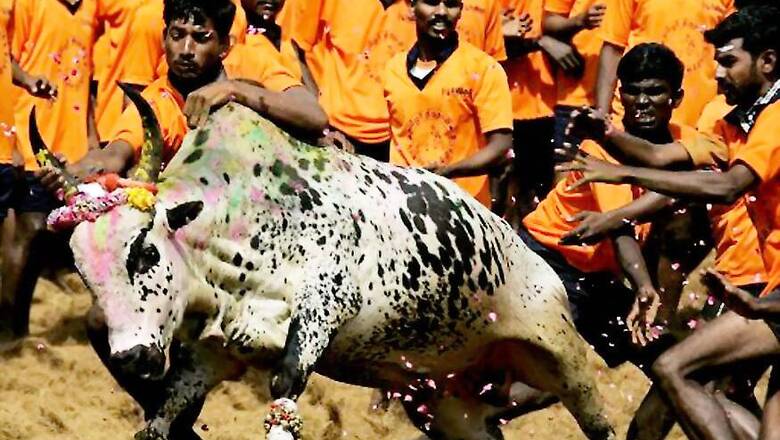
views
Politicians across parties in Tamil Nadu have been pushing for lifting the ban on Jallikattu saying it is part of tradition. But the bull-taming sport was banned on grounds on animal cruelty. The sport flouts the law on animal cruelty in the following manner.
Ear cutting/Mutilation
- Justification: By cutting the ear, the animal would be able to hear sounds even from the back, important while the animals are in the Jallikattu arena
- Concern: Cutting external ear in no way helps to improve a bull’s hearing. Instead, the bull loses his natural ability to receive sounds signals
- Violation: Section 11(1)(a) of the prevention of Cruelty to Animals Act, 1960; section 11(1)(l), which prohibits the mutilation of an animal’s body.
Fracture and dislocation of tail bones
- Observation: Bulls suffered from dislocated or even amputated tails caused by deliberate pulling and twisting.
- Concern: Dislocation and fracture of the tail vertebrae are extremely painful conditions.
- Violation: Section 11(1)(a) of the Prevention of Cruelty to Animals Act, 1960
Biting the bull’s tail
- Observation: Bulls are poked, beaten and deliberately agitated before they are forced into the Jallikattu arena
- Concern: any direct pressure or injury to the tail bones causes extreme pain that sends bulls into a frenzy
- Violation: Section 11(1)(a) of the Prevention of Cruelty to Animals Act, 1960
Poking bulls with knives and sticks
- Observation: many bulls were poked with sticks by owners, police officials and organizers inside arena
- Concern: Poking bulls with sticks or sharp knives causes immense pain and agitation
- Violation: Section 11(1)(a) of the Prevention of Cruelty to Animals Act, 1960
Using irritants
- Observation: Irritant solutions rubbed into the eyes and noses of bulls in order to agitate them
- Concern: Eyes and noses are very sensitive, sensory organs, and the use of any irritating chemicals causes pain, distress and an intense sensation
- Violation: Section 11(1)(c), which prohibits the willful and unreasonable administration of any injurious drug or substance to any animal
Using nose ropes
- Observation: Nose ropes are frequently pulled, yanked or tightened in order to control bulls before they were released into arenas. some animals were even bleeding from the nose as a result of injuries caused by pulling the rope.
- Concern: Pulling or twisting the nose rope exerts pressure on the nerve-rich and extremely sensitive septum, causing bulls pain and making it easier for handlers to force them to move in a desired direction.
- Violation: Section 11(1)(a) of the prevention of cruelty to animals act, 1960
Source: Jallikattu investigation by Animal Welfare Board of India February 2013

















Comments
0 comment